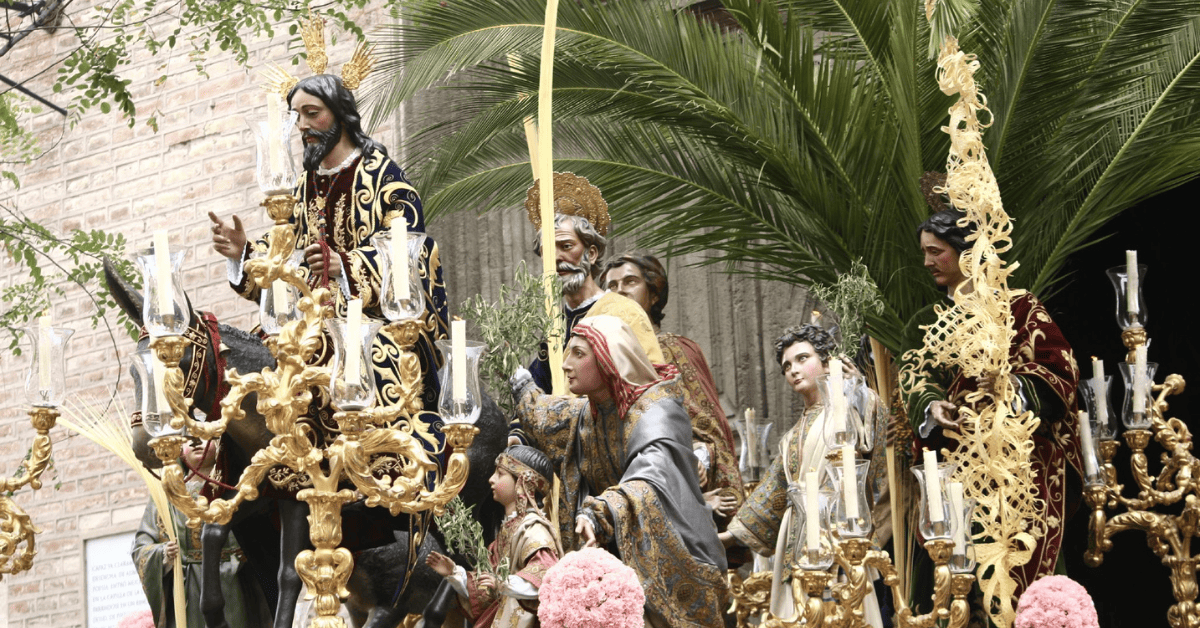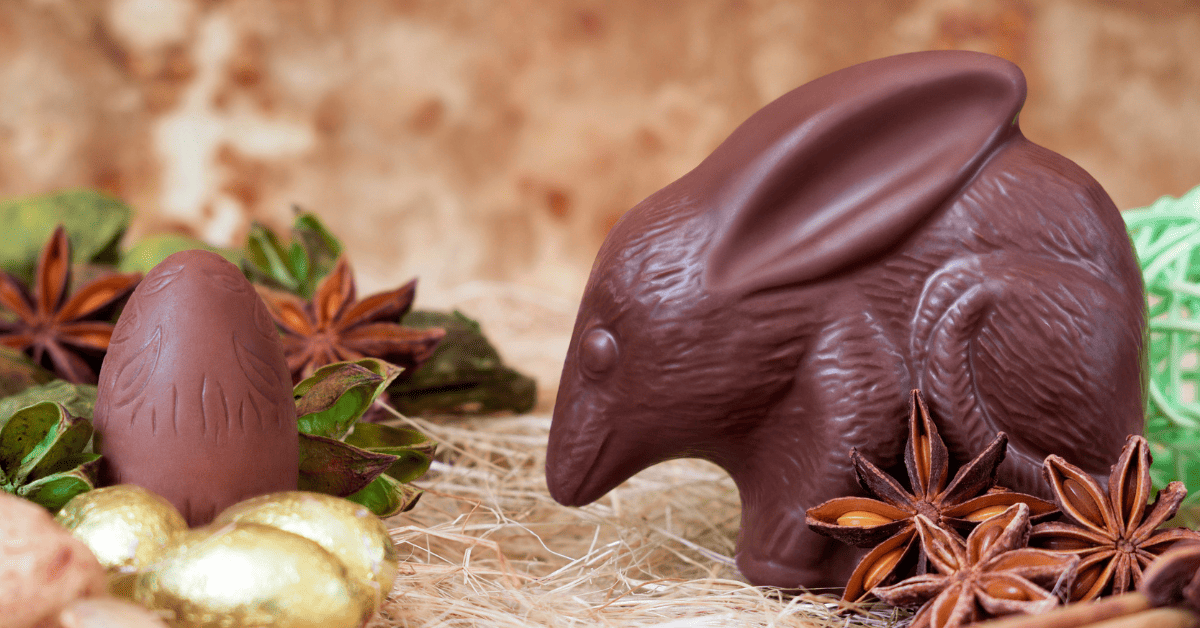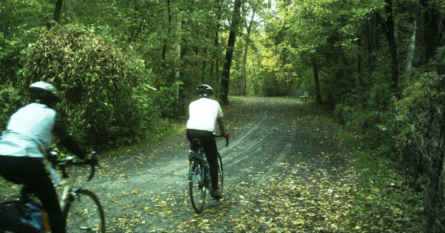Estimated reading time: 11 minutes
Discover some of the most exciting and eye-opening Easter traditions around the world – and perhaps make space for them in your travel plans.

Are you ready to go egg-sploring?!
As well as its meaning within Christian tradition, Easter marks the end of winter and the beginning of spring proper in many parts of the world. As such, it represents an important moment of change and rebirth—and a time of celebration. While chocolate eggs, chicks, and bunnies will always be symbols of the season, some places like to do Easter their own way. Read on for 9 remarkable Easter traditions around the world that are sure to inspire and surprise.
Table of Contents
- Giant Easter Omelet— Bessieres, France
- An Explosive Easter — Florence, Italy
- Pot Throwing, Corfu — Greece
- Sacred Processions — Seville, Spain
- Crimes to Crack — Oslo, Norway
- Easter Witches — Helsinki, Finland and Stockholm, Sweden
- Egg Rolling — Preston, UK
- Chocolate Easter Bilbies — Sydney, Perth, and Melbourne, Australia
- Kite Flying — Bermuda
- Enjoy Easter Traditions Around the World in Style
- FAQs About Easter Traditions Around the World
Giant Easter Omelet— Bessieres, France
Think of France and you may conjure up images of baguettes, berets, and the Eiffel Tower. But Easter in France? It’s like adding a splash of chocolate to your croissant—unexpectedly delightful and oh-so-French!
As we all know, one of the enduring symbols of Easter is, of course, the humble egg. And in the southern French town of Bessieres, next to Toulouse, they’ve truly cracked how to get the party started on Easter Monday—with an enormous commemorative omelet!
Approximately 15,000 eggs go into the town’s colossal pan in the main square, which is then carefully tended (and presumably very well-seasoned) by members of the prestigious (and none too subtle) Brotherhood of the Giant Omelette. Dressed in their chef’s whites, these ambitious gourmands use huge wooden paddles to get the cooking just right.
It’s one big party for the locals and visitors, with observers of the cook-up reportedly numbering around 10,000. Whether there’s enough to go around we can’t say—although the Brotherhood’s mission statement is: ‘To prepare and serve, free of charge and full of joy, a giant omelet’. Festivities roll on for several days in a carnival atmosphere, including music, dancing, feasting, and parades.
An Explosive Easter — Florence, Italy
Italy could rarely be accused of lacking panache as a country, and in Florence, they like to celebrate Easter with a real bang.
A tradition dating back hundreds of years, the Scoppio del Carro, or Exploding Cart, does exactly what it says on the tin.
Every Easter Sunday, an ornate cart loaded with fireworks is wheeled into Florence’s famous piazza by festival-goers decked out in traditional Renaissance garb. The unusual payload comes to a stop in front of the Cathedral of Santa Maria del Fiore, or Duomo—one of Florence’s most iconic buildings. Then, while giving Easter mass, the city’s Archbishop duly lights the fuse. This is housed in a mechanical dove called the Colombina. The dove zips along a wire, straight into the cart and…kaboom!
The resulting fireworks display lasts 20 minutes, and all manner of pomp also accompanies the moment, including drummers and church bells ringing out. If you’re visiting Florence this Easter, make sure you don’t miss this eggsplosive tradition—although it’s so loud and dramatic, you may not have the choice!
Pot Throwing, Corfu — Greece
Easter, marking spring’s arrival in many countries, is celebrated uniquely on the Greek island of Corfu. Here, the tradition of discarding the old takes on a literal meaning in one of the most unique Easter traditions in Greece.
The Easter Saturday ritual of Botides sees clay pots filled with water come crashing down from balconies and windows in the center of town. This dramatic breaking of the earthenware is believed by some to chase away evil spirits.
The tradition’s origin remains disputed. Many say it was adapted from the Venetians, who ruled Corfu between the 14th and 18th centuries. Every New Year’s Day, old objects would be flung from the windows of homes, in the hope that casting aside the old would bring in the new. This custom, so the story goes, was repurposed in Corfu, with pots introduced and the date rescheduled to Easter.
Alternatively, others maintain that Botides are derived from a much older culture: the Ancient Greeks themselves. Spring marked a new season of planting, so old clay pots containing seedlings had to be thrown out—perhaps literally.
Whatever the truth, this unique tradition is ever popular with sightseers and locals alike, and the streets of Corfu are always crammed with observers keen to witness the chaos. Smashing!
Sacred Processions — Seville, Spain
For Christians all over the world, Easter represents one of the most important dates in the spiritual calendar. And few places can match the richness and diversity of the Easter traditions in Spain.

In the beautiful southern Spanish city of Seville, the Holy Week leading up to Easter—known as Semana de Santa in Spanish—brings with it particularly stunning celebrations. Huge statues called pasos are carried through the narrow streets, depicting key scenes from the Bible about Jesus Christ’s crucifixion and resurrection. This is very much a community event, with crowds filling the streets to see brotherhoods from Seville’s 115 or so churches bringing the processions to life.
Some of the pasos are over 300 years old and are decked out in beautiful ornamentation, including crucifixes, flowers, and candles. They’re also heavy, weighing up to a ton and needing between 20 and 40 people to carry. Sometimes processions can last up to 12 hours, so dedication is essential.
As well as these spectacular relics, Semana de Santa sees a wide variety of celebrants in traditional holy dress and costume throughout the week. For the visitor, it’s a chance to marvel at the magnificence of Spain’s heritage unfolding in the present moment.
Crimes to Crack — Oslo, Norway
Eggs aren’t the only thing being cracked open in Norway over Easter. Devious criminal cases are also being unwrapped!
Thanks to a sensational 1923 crime novel, Easter in Norway has become synonymous with enjoying whodunnits. Påskekrim, or ‘Easter crime’, has been a hugely popular staple of the spring holiday for a little over 100 years and sees a collective craze for all things crime fiction grip the nation. Norwegian TV channels broadcast murderous dramas aplenty, while bookshops curate special thriller selections, all to help people get their Easter crime fix.
Fascinatingly, it was a PR stunt that launched the tradition. In many cultures, the 1920s represented a decade of bold boundary-pushing, following on from the horrors of the First World War. In Norway, one potent example of this took place in February 1923, when authors Nordahl Grieg and Nils Lie decided, alongside their publisher, to try a unique way to publicize a new crime novel.
The idea was to get an advert for their book, ‘Armed Robbery on the Bergen Train’, into the news. It succeeded spectacularly, appearing on the front page of the national paper Aftenposten just a week before Easter Sunday.
With typography that was indistinguishable from a regular news story, many readers confused the PR campaign for a real story. Once they realized otherwise and their shock subsided, they rushed out to buy the book in their thousands, and the Påskekrim tradition was begun.
Easter Witches — Helsinki, Finland and Stockholm, Sweden
Easter and chocolate treats: In many cultures, they’re absolutely inseparable, most famously enjoyed as yummy Easter eggs.
But in Sweden and Finland, you’ll also find a tradition similar to the trick-or-treating typically associated with Halloween later in the year. Dressed in bright colors and with freckles drawn on their cheeks, kids take up the role of Easter witches, roaming between neighborhood doors to request (or perhaps demand!) an offering of treats. Decorated willow twigs complete the outfit, which the children wave to bestow good luck onto households. This theatrical custom has darker roots.
In the Christian tradition, Maundy Thursday was the day when Judas betrayed Jesus Christ. It was believed that a great outpouring of evil followed this moment, including a summoning of witches to the Devil’s court on the Swedish island of Blåkulla. To keep the evil at bay, fires were made across the country—some of which may have actually been used to burn would-be witches during times of heightened superstition.
The only witches you’ll see during Easter are short, adorable ones, acting as bringers of good fortune for the coming year. In Finland, there’s even a traditional rhyme which the children sing as they make their visits: “virvon, varvon, tuoreeks terveeks, tulevaks vuodeks, vitsa sulle, palkka mulle”. Translation: “I wave a twig for a fresh and healthy year ahead; a twig for you, a treat for me”!
Egg Rolling — Preston, UK
Keep rollin’, rollin’, rollin’, rollin’…in the British city of Preston in Lancashire, north of Manchester, you’ll find an annual Easter throwdown that’s positively eggcellent.
For over 150 years, families have gathered in Avenham and Miller Parks on Easter Monday to enjoy the simple yet satisfying practice of egg rolling. With chocolate eggs in hand, the rollers track down an optimal spot on one of the parklands’ steep hills and let loose. Official rolls take place on the hour, letting you experience the unique spectacle of hundreds of people tumbling their eggs downhill together. It’s certainly one way to solve the ever-tricky conundrum of how to open a chocolate egg.
The tradition isn’t only found in Preston but harks back to a much older local custom. Pace-eggs were originally hard-boiled in onion skins in the 19th century to give their shells a golden hue. Much like today, kids would roll their pace-eggs down hills, hoping their own would go the farthest without breaking.
While this ritual is rarely seen today, the annual egg-stravaganza in Preston has expanded into a mini-festival all of its own, featuring performing arts, workshops, and plenty more fun for all the family.
Chocolate Easter Bilbies — Sydney, Perth, and Melbourne, Australia
The Easter Bunny may be known the world over as the mascot of Easter celebrations, but in Australia, they have strong competition from a local: The bilby, a curious native Australian marsupial that’s also endangered.

Bilbies look a lot like rabbits, with long ears, whiskers, and fluffy gray fur. But in Australian history, rabbits have a pretty troublesome reputation. After being introduced to the continent in the mid-nineteenth century, they quickly spread across much of the landmass, causing untold havoc to native wildlife and settlers’ farms.
This resulted in a concentrated effort to contain the population and prevent its expansion, with rabbit-proof fences and rabbit hunts being the order of the day. All the measures ultimately failed, and for many Australians, the ravenous rabbits were a total scourge. To raise awareness of the damage feral rabbits do to native wildlife, including the bilby, a number of children’s authors and associations fostered the idea of the Easter Bilby.
The character became popular, and soon chocolate companies got in on the act, producing Easter bilbies as alternatives to bunnies. Today, these conservation-focused confections are a springtime favorite all over Australia.
Kite Flying — Bermuda
Turquoise seas, golden sands, windswept greenery…few places can boast a color palette like the Caribbean. As if that wasn’t enough, the island of Bermuda becomes even more vibrant during Easter celebrations.
Head down to Horseshoe Bay Beach on Good Friday, and you’ll witness a kaleidoscope of colors in flight at Bermuda’s annual kite festival. Bermuda kites are famous for their unique octagonal shape, dazzling concentric patterns, and long cloth tails. From the humble Somerset brown paper kite—one of the most traditional—to enormous super kites that need several people to get airborne, the variety and ingenuity behind these flyers is inspiring.
Competitions are held throughout the day to crown the best kites, filling the skies with a spectrum of wild colors.
This magical tradition started when a school teacher got creative. Looking for a clever and direct way to explain Christ’s ascension into heaven to his students, he engineered a kite with a picture of Jesus on it. As school lessons go, it was a phenomenal success…so much so that people are still sending up kites in celebration of Easter in Bermuda.
Enjoy Easter Traditions Around the World in Style
It’s essential to keep in mind that, as joyful as the most amazing Easter traditions around the world are, traffic can become incredibly congested in certain locations, making it challenging to reach your destination on time and in a relaxed state.
For a truly stress-free festive journey, count on Blacklane. By booking your chauffeured ride with Blacklane, you’re choosing the most convenient way to reach your destination, saving you time and hassle.
With our top-tier sedans as well as larger SUVs or Vans for larger families, there’s an option for everyone, and you can feel good about your footprint since all our rides are carbon offset. Just choose the best time for you and leave the driving to the professionals. Plus, if your plans change you can easily change your booking or cancel for free up until 1 hour before your ride.
FAQs About Easter Traditions Around the World
What countries celebrate Easter?
Numerous countries around the world celebrate Easter, primarily those with Christian populations. Examples include countries in Europe, the Americas, Africa, and parts of Asia.
When is Easter celebrated in Greece?
The date of Easter is based on the Julian calendar, which often differs from the Gregorian calendar used by many western countries. Therefore, the Orthodox Easter period often occurs later than the Easter period that falls around the time of the March equinox. In 2024, Greek Easter is celebrated on Sunday, May 5.
How is Easter celebrated around the world, and why do people celebrate Easter?
Easter is celebrated through various traditions such as attending church services, decorating eggs, and enjoying festive meals. It commemorates the resurrection of Jesus Christ.
What are some traditional Easter meals?
Traditional Easter meals vary by region but often include dishes like lamb, ham, or fish, along with sides like potatoes, vegetables, and bread.
Why is Easter called Easter?
The name “Easter” is believed to have origins in the Old English word “Ēastre,” which may be derived from a pagan spring festival celebrating fertility.
What is Easter Monday and how is it observed?
Easter Monday is the day after Easter Sunday and is observed in some countries as a public holiday. It’s often a time for family gatherings, outdoor activities, or continuation of Easter celebrations.



